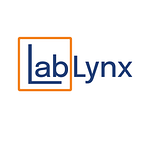What are the key elements of a LIMS for Materials Testing?
In the pursuit of accuracy and efficiency, material testing labs are increasingly turning to laboratory information management systems (LIMS) to replace paper and spreadsheets. A LIMS acts as the digital backbone, transforming manual processes into modernized, automated, and error-free operations.
Key elements of a LIMS for material testing
Streamlined sample management, efficient data organization, workflow automation, quality control, compliance, and instrument integration are just a few of the critical elements that make a LIMS invaluable for material testing labs.
Streamlined sample management
Material testing labs handle many samples daily, each requiring precise tracking and management. Managing this high volume with manual processes is prone to errors, mix-ups, and delays. A LIMS provides a centralized database for sample information, ensuring samples are tracked from intake to disposal. From concrete in a construction industry lab to alloys in a metallurgical facility, each sample in a LIMS is tagged upon arrival, and its journey through various tests and analyses is monitored in real time. A LIMS can flag any deviations in conditions, such as temperature or storage, that might affect the sample’s integrity, leading to precise and trustworthy results.
Efficient data organization
Accurate and well-organized data is crucial in material testing. A LIMS automates data entry and organizes data in a structured manner, eliminating errors associated with manual data entry. By eliminating transcription mistakes, a LIMS ensures that the data entered into the system is accurate and reliable.
Material testing labs also generate diverse sets of data, ranging from chemical compositions to physical properties. LIMS software organizes this data in a structured manner, making it easily accessible and interpretable. For example, in a polymer lab, a LIMS can categorize data based on parameters like molecular weight or chemical makeup. This structured approach simplifies data interpretation and aids scientists in making informed decisions.
Workflow automation
LIMS software revolutionizes workflows by automating testing protocols and generating real-time reports. It guides laboratory technicians step-by-step, ensuring standardized testing procedures are followed. A LIMS also generates real-time reports. As soon as a test is completed, it compiles the results into comprehensive report templates, ready for client or regulatory submissions. This speed allows for swift decision-making and compliance adherence.
Automated workflows optimize resource utilization, including time, equipment, and human resources. LIMS software can schedule testing equipment efficiently, ensuring high-demand instruments are utilized to their maximum capacity. Optimal resource allocation maximizes the lab’s efficiency and throughput.
Quality control and compliance
Consistency and quality are paramount in material testing. A LIMS facilitates real-time monitoring of testing processes, ensuring that tests are conducted uniformly. It provides alerts for out-of-specification results, enabling immediate corrective actions. This quality control mechanism safeguards the integrity of test results and enhances the overall quality assurance process.
Material testing labs must also adhere to various industry standards and regulations. A LIMS enforces these standards by warranting that tests follow the specified protocols. It maintains a comprehensive audit trail, documenting every step of the testing process by each member of the laboratory staff. This audit trail is invaluable during regulatory audits, demonstrating compliance with industry regulations and enhancing the lab’s credibility.
Instrument Integration
Material testing labs use a variety of specialized instruments, whether a spectrometer in a metallurgical lab or an advanced microscope used for nanomaterial research. A LIMS software solution seamlessly integrates with these instruments, capturing data directly. Instrument integration eliminates manual transcription errors and guarantees that raw data is accurately recorded and processed. It also enables real-time instrument performance monitoring, allowing for proactive maintenance and reliable results.
Read more Blogs, News, and Events from LabLynx here.
